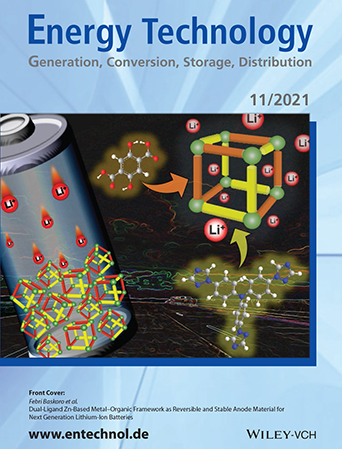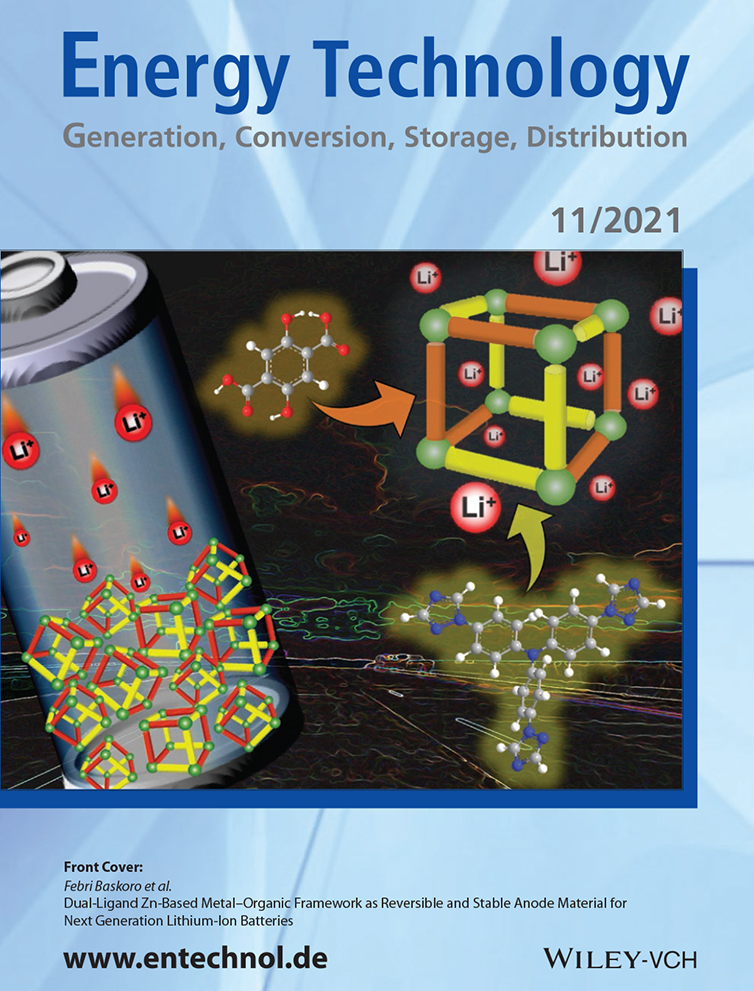Dual-Ligand Zn-Based Metal–Organic Framework as Reversible and Stable Anode Material for Next Generation Lithium-Ion Batteries
Graphical Abstract
A promising high stability zinc-based metal-organic framework with a special dual-ligand system as lithium-ion battery anode was explored. The detailed analysis of the structure-performance relationship reveals a reversible specific capacity, good rate performance, and long-term material stability which is a potential candidate for next-generation lithium-ion batteries. More details can be found in article number 2100212, Hung-Ju Yen and co-workers.





